The Dulong Mines 都竜厂 in Maguan District 马关县
The existence of the mines is known from Qing and Annamese records. Qing government reports of the 1740s reflect the presence of several ten-thousand men in the mines.
The mines were within the territory of Annam and known to exploit copper and silver. They are thought to have been a mains source of copper for the Annamese copper currency. The distribution of sites where copper and silver, and lead ores were exploited is uncertain.
Fieldwork by Yang Yuda and Nanny Kim, with Ma Qi 马骑, Zhang Kefeng 张轲风, Nie Xun 聂迅, Xia Zijin 夏自金, Jiang Jianguo 姜建国, 2015.11.11., supported by the Dulong Tin and Indium Mining Company
2015.11.10.
Reach Maguan 马关 after dusk.
2015.11.11.
Maguan-Dulong. The day started with unseasonal rain, and stayed overcast with some rain. Laojunshan 老君山, the mountain towering over the area to the east, never revealed its peak. We were all put up at the guesthouse of the Dulong Tin and Indium Mining Company and thus able to spend two days in Dulong. Mr. Hu 胡, the technical director, provided guidance.
In Dulong, all historic mining is attributed to “the French.” This attribution is even extended to other historic remains, such as a fortification tower on a hill overlooking the road from Maguan to Dulong, which almost certainly is a Qing border fortification built when Dulong was considered part of Annam.
Mr. Hu took us to the place that according to all informants involved in mining considered the main site of historical smelting and mining, named Tongjie 铜街 (copper market). The road leaving Dulong town to the south leads up a spur of the Laojunshan. The first side valley is Shuidongchang 水洞厂 (Water Cave Mine). According to Mr. Hu, the slope facing SW used to be covered in slags, much of which were dug up and sold by local entrepreneurs since the 1990s. From specimens found along the road and in the fields, these appear to be slags from copper smelting. There is a possibility that these were left by relatively early re-smelting.
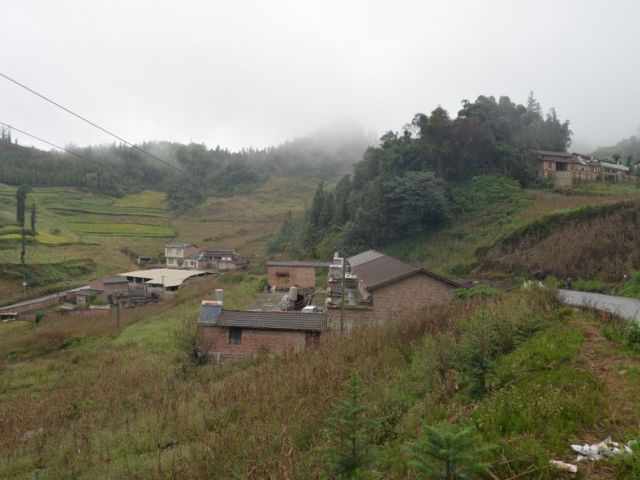
The Shuidongchang valley
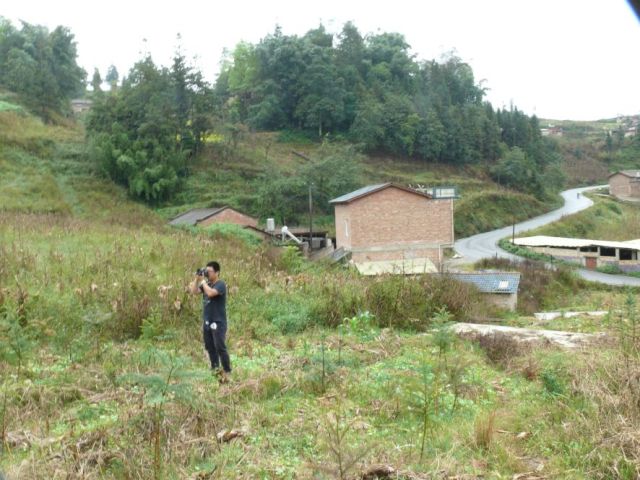
Nie Xun in the fields covered in slags in the Shuidongchang valley.
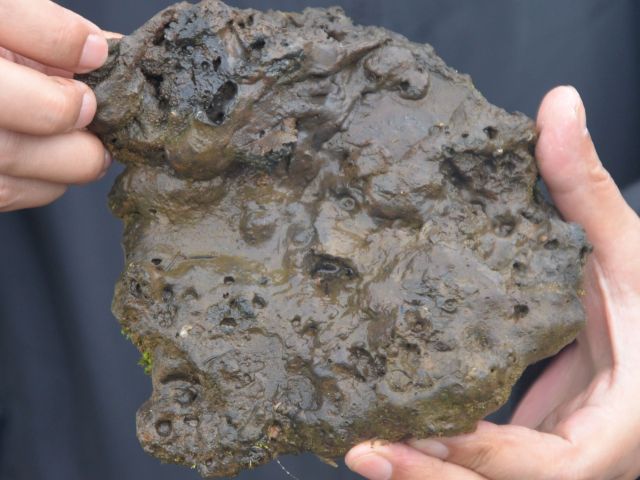
A large specimen. Photo by Nie Xun.
Not far further up and on the other side of the ridge is Tongjie. A village of this name used to exist on what is now the western end of a huge open pit mine. Mr. Hu took us to a point where could overlook the extensive slope and the mine below. According to his memory, the point where we were standing was near the upper end of the historic slags, which extended down the slope over about 300 m (in height) and along a width of 2 km or more. Most of the slope had been dug up and changed, with a small stand of fir trees according to Mr. Hu the only undisturbed strip. An old smelting site according to his knowledge was still visible a long way down and around the bend near the lower end of the southern spur of the mountain.
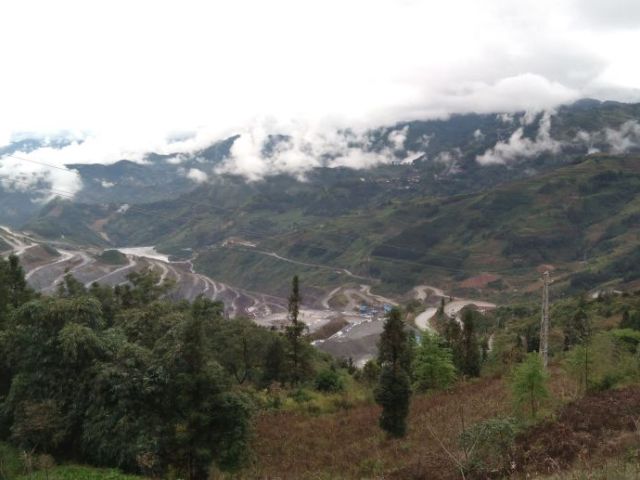
The open pit mine.
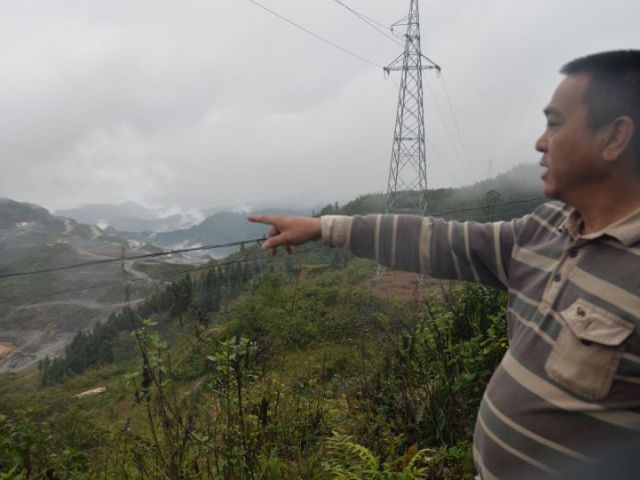
Mr Hu pointing out sites of old mines and smelters on the slopes across the smaller pit. Photo by Nie Xun.
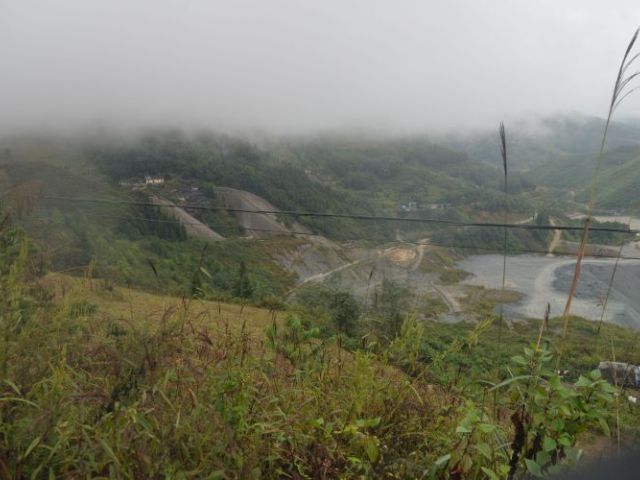
The site Mr. Hu indicated was near the small white building on the slope. Photo by Nie Xun.
Two of us went for a quick exploration heading further up, and heard that old mine entrances were to be found a considerable way up the mountain side in the forest. Among fast-growing trees and tree ferns, we were unable to reliably establish the presence or absence of slags on the forest floor. We picked up some specimens from the upper end of the slag field, walked down about 50 me to gain an impression of further down, and later entered the area from the bottom corner. The slope is quite instable and ends in a pond that catches waste water, with numerous traces of copper mineralization in the lower parts.
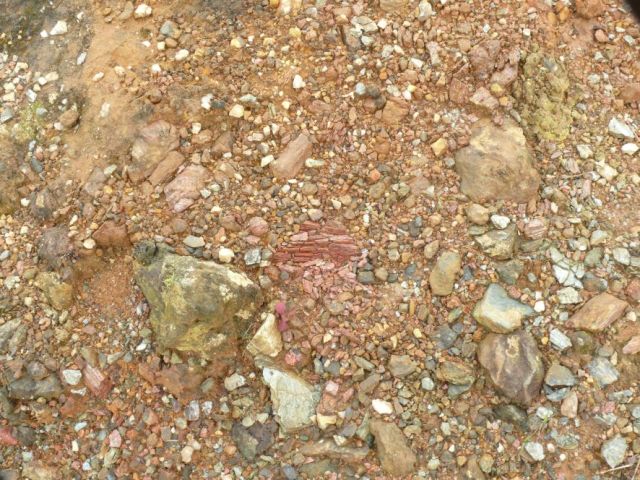
Slags thins spread in the ground near the top of the Tongjie slope.
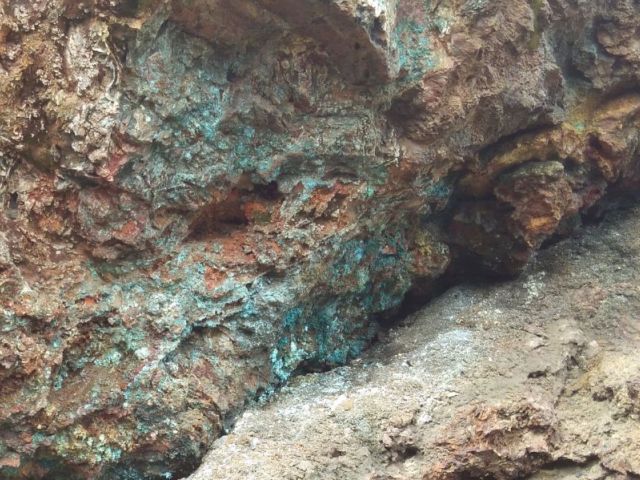
Copper oxide mineralization in the lower end of the slop. Photo by Nie Xun.
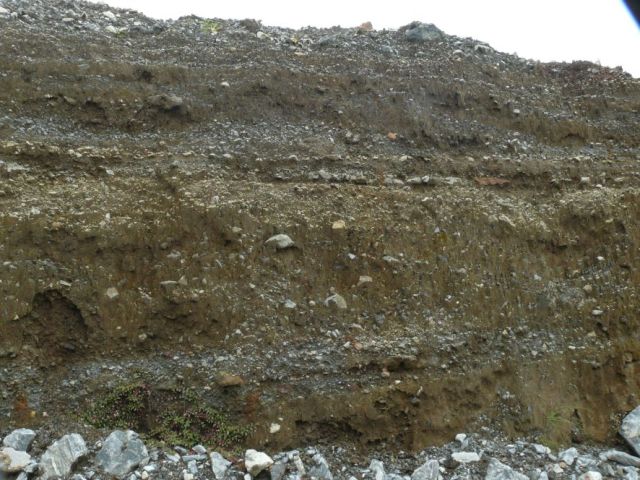
Alternating undisturbed layers of gangue and slags near the lower end of the slope.
According to Mr Hu, the metal content in the slags is low, and re-exploitation no longer viable even as a small-scale local occupation. Some activity nontheless is still visible on the slope, even some galleries were driven into the unstable rock.
As it was still early in the afternoon, we went on to Laojie 老街 (old market), which I guessed might have been the old center. It turned out that Laojie actually has been turned into fields when the present town of Dulong took over the market function, while present-day Laojie is a small village below. Coming to this place nevertheless was a stroke of luck, because Mr. Hu called on an acquaintance, doctor Huang, who had been in mining. It turned out that doctor Huang not only was one of the rare persons whose family had been in the area for many generation, but also possessed a genealogy that his wife thankfully found.
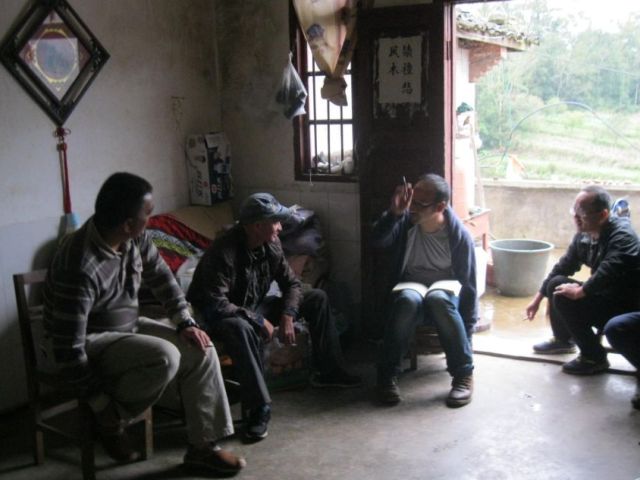
Mr. Hu, doctor Huang, Zhang Kefeng and Ma Qi in the house of doctor Huang. Photo by Jiang Jianguo
2015.11.12. Dulong, in the evening to Wenshan
In the morning met a group of four elderly men who knew something about the mines. Like doctor Huang of Laojie, they all referred to historic mines as “French mines,” and had some detailed stories. These confirmed that Tongjie was the main copper mine. They all agreed that the number of old mine entrances was greatest at Tongjie. Most entered the mountain in an inclined angle, and the deepest were some 400 m deep. Silver ore was mined at the Nandang 南当厂 and Wawa Mines 娃娃厂. A story about Nandang involved the find of a huge pillar base that was part of the French storehouse, while the name Wawa was derived from the grave of a French princess found there, which contained a golden statue. They were in agreement that historic mining was for copper and lead, while zinc and tin ores were were discarded. Concerning lead content they though that ores mined at Tongjie would not have contained noticeable amounts of lead, while the lead content may have been higher at Nandang, but relatively low throughout.
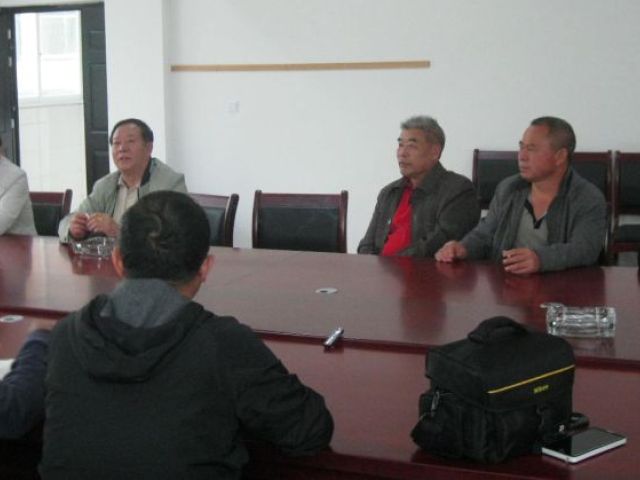
Meeting with the four informants at Dulong. Photo by Jiang Jianguo
In the afternoon, we headed out to Nandang, some 15 km SW of Dulong. Took a detour to Lazizhai 辣子寨 to pick up the secretary of the village compound. He was certainly unkeen and in plastic slippers but nice enough to indulge our strange interest. Nandang village is in the process of being moved up to the ridge because a hole opened in the mountainside below that the old village. The story turned out to be true.
There is a small water reservoir that has d up below the ridge. The pillar base was said to be found here. Old Nandang village is about 2 km down on the southern slope of a deep valley. The secretary took us as far as the slag dumps just below the eastern end of the village. The crater below the village was visible in the fields. A quick exploration some way beyond the western end of the village and along the slope covered in trrassed fields below the village established the presence of slags over the entire slope.
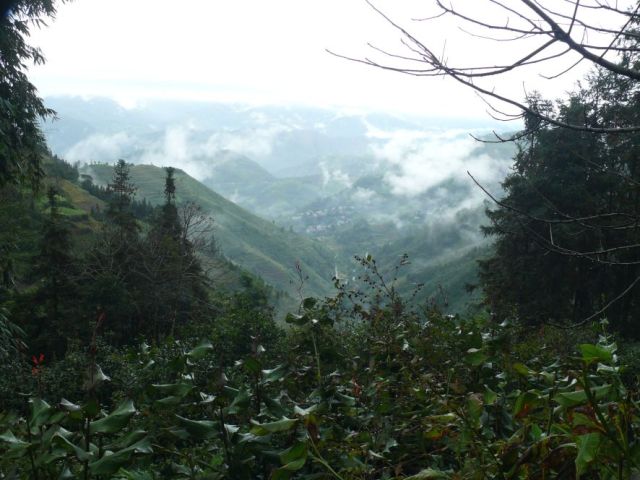
View down the valley from the water reservoir. Nandang is in the next valley.
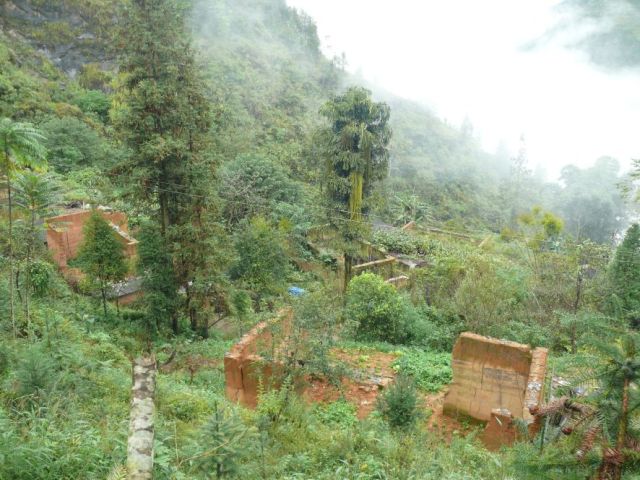
The top houses of the abandoned village.
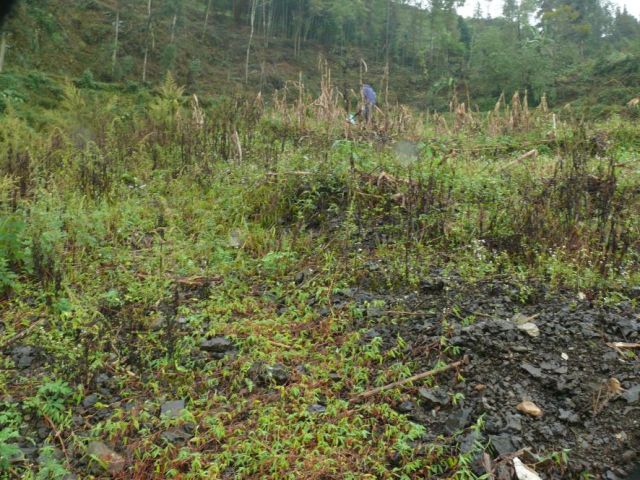
Fields covered in slags some way below the ruined houses.
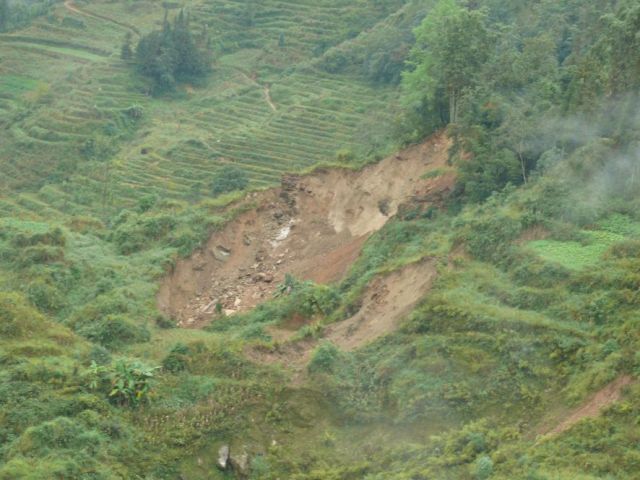
The crater below the old village
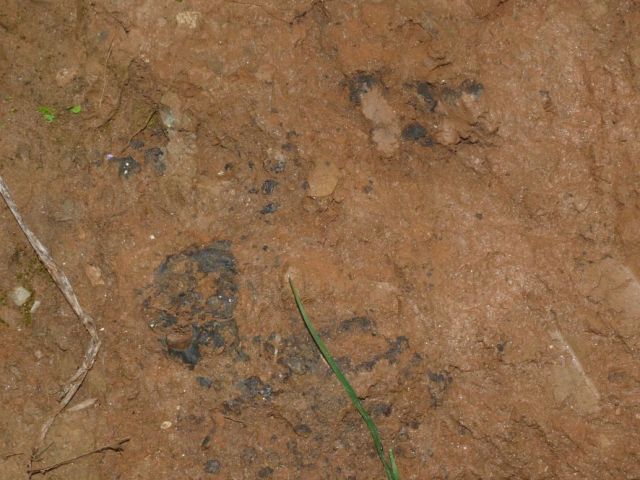
Soil section exposed by a recent widening of the path showing slags at a depth of about 2 m under the original surface.
The team that had stayed in the village meanwhile sighted old galleries in a cliff, presumably exposed by a rockfall.
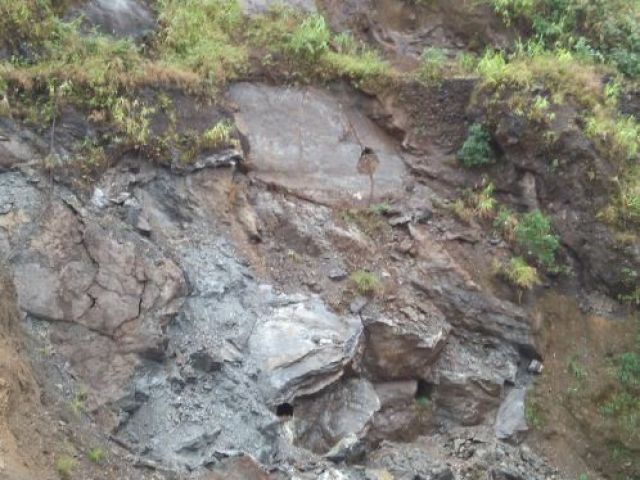
Mining galleries in a cliff above the old village. Photo by Nie Xun.
Several sites could not be visited due to time constraints. The Wawa Mines are on the same ridge some way further down and thought to be the lesser of the two sites. Some 30 km further along the ridge is a town called Jinchang 金厂 (Gold or Silver Mine) that we also could not visit this time due to time constraints. Some 10 km south of Maguan is a site known as lead mines.
Results: Tongjie could be established as a very important copper mine. This finding is supported by geological surveys and estimates of the volume of the slags. Nandang could be established as a silver mine of some importance, while many aspects about silver mining in the Dulong area remain open, including the possibility of silver-copper ores at Tongjie, the apparently missing but necessary supply of lead for silver cupellation, and the possibility of further mines at Jinchang.

